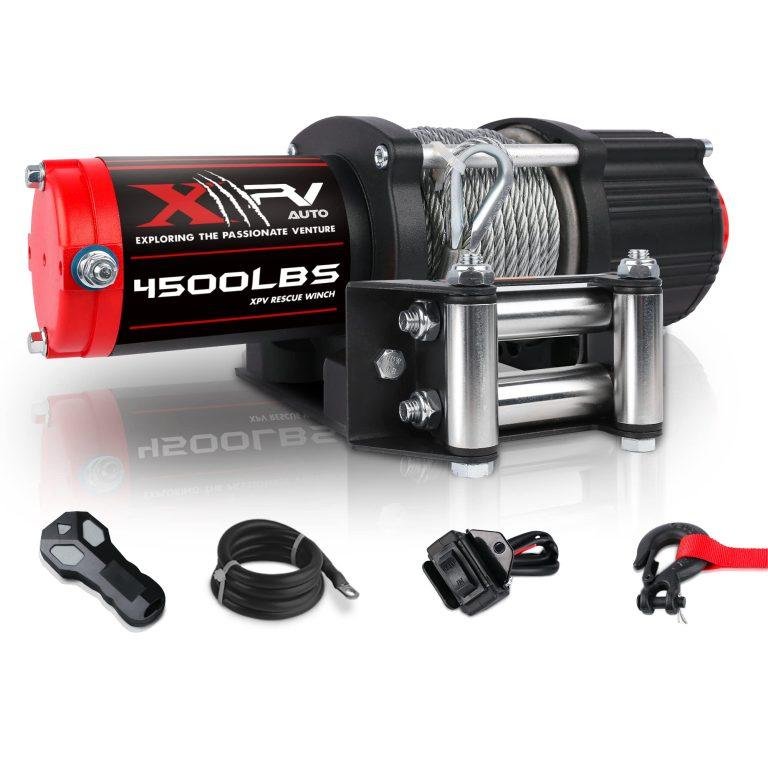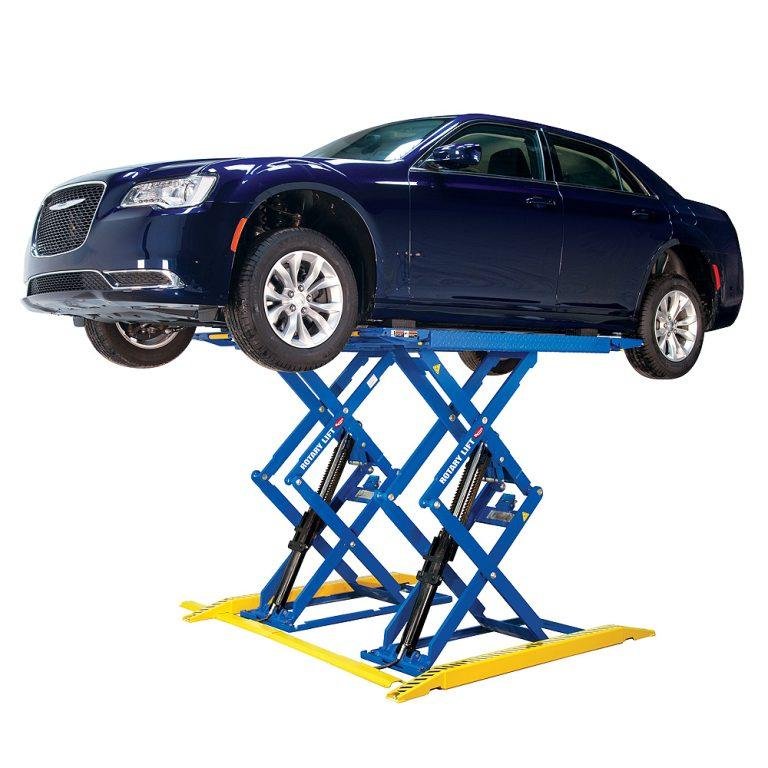Yes, crossbars are necessary for a kayak rack in order to securely transport and stabilize the kayak on the roof of a vehicle. To safely transport kayaks and maximize storage space, kayak racks typically require crossbars.
Crossbars are horizontal bars that are mounted on the roof of a vehicle and provide a foundation for attaching kayak racks. Without crossbars, it would be challenging to secure the kayak properly and ensure it remains stable during transportation. Additionally, crossbars offer flexibility for attaching other accessories such as bikes or cargo boxes.
Therefore, it is crucial to have crossbars when using a kayak rack to ensure the safe and efficient transportation of your kayak.

Credit: www.rei.com
The Importance Of Crossbars For Kayak Rack Stability
Crossbars are essential for kayak rack stability, providing a secure foundation for transporting your kayak. Without crossbars, there is a risk of your kayak shifting or falling off during transportation, potentially causing damage. Invest in crossbars to ensure a safe and stable journey for your kayak.
Crossbars: A Must-Have For Secure Kayak Transportation
Transporting your kayak safely and securely is essential to ensure that you can enjoy your water adventures without any worry. One of the key components of a reliable kayak rack is the crossbars. These crucial elements play a vital role in ensuring stability during transportation.
Let’s explore the importance of crossbars for kayak rack stability in detail:
- Distributing weight and maintaining balance: The primary function of crossbars is to evenly distribute the weight of your kayak across the roof of your vehicle. By providing a sturdy and level surface, crossbars help maintain balance and prevent any unnecessary movement or sway that may occur during transit.
- Preventing kayak movement: Crossbars act as a secure base for your kayak, preventing any lateral or vertical movement while on the road. This is especially important when encountering bumps, turns, or sudden stops that could otherwise cause the kayak to shift and potentially lead to damage or accidents.
- Minimizing potential damage: Thanks to the stability provided by crossbars, the risk of your kayak getting scratched, dented, or even falling off the rack is significantly reduced. Crossbars keep the kayak securely in place, ensuring a smooth and damage-free journey.
- Enhancing safety: When it comes to transporting larger and heavier kayaks, or carrying multiple kayaks simultaneously, crossbars become even more crucial. They provide the necessary support and structural integrity to handle the additional weight, minimizing the risk of accidents and ensuring the safety of both your kayak and other vehicles on the road.
- Versatility for other outdoor gear: Apart from kayaks, crossbars can also accommodate other outdoor gear such as paddleboards, canoes, and even bicycles. With the right kayak rack system, you can easily adapt your crossbars to transport various types of equipment, making them a versatile and valuable asset for any outdoor enthusiast.
Crossbars are an absolute necessity when it comes to securely transporting your kayak. Their ability to distribute weight, maintain balance, prevent movement, and minimize potential damage is crucial for a safe and worry-free journey. Investing in high-quality crossbars will ensure that you can enjoy your kayaking adventures with peace of mind, knowing that your equipment is secure and protected throughout the entire transportation process.
Choosing The Right Type Of Crossbars For Your Kayak Rack
Choosing the right type of crossbars for your kayak rack is essential to ensure a secure and hassle-free transportation of your kayak. With various options available in the market, it’s important to consider factors like compatibility, load capacity, and ease of installation to make the best choice for your needs.
If you’re considering investing in a kayak rack, you may be wondering if crossbars are necessary. Well, the answer depends on the type of kayak rack system you have or plan to use. Crossbars play a crucial role in providing stability, security, and convenience when transporting your kayak.
In this section, we will explore the different types of crossbars available for kayak racks and factors to consider when selecting the right ones for your needs.
Types Of Crossbars For Kayak Racks
There are two main types of crossbars commonly used for kayak racks: aero and square crossbars. Let’s delve into the pros and cons of each:
Aero Vs Square Crossbars: Pros And Cons
- Aero crossbars:
- Pros:
- Sleek and aerodynamic design reduces wind resistance for better fuel efficiency.
- Quieter during travel due to their streamlined shape.
- Easy installation and removal with compatible kayak rack systems.
- Cons:
- Limited attachment options due to the streamlined shape, which may affect versatility.
- Higher cost compared to square crossbars.
- Square crossbars:
- Pros:
- Versatile attachment options with the availability of various accessories such as kayak saddles, j-cradles, or uprights.
- Lower cost compared to aero crossbars.
- Can transport other gear like bikes or cargo boxes alongside the kayak.
- Cons:
- Increased wind resistance, which may impact fuel efficiency.
- More noise generated during travel due to the square shape.
Consider the specific needs and preferences when choosing between aero and square crossbars for your kayak rack system.
Compatibility With Different Kayak Rack Systems
It’s essential to ensure that the crossbars you select are compatible with the type of kayak rack system you have or plan to use. Not all crossbars are universal, so take note of the manufacturer’s recommendations. Compatibility factors to consider include:
- Attachment method: Some kayak rack systems require specific crossbar attachments such as t-slot mounting or clamp-style systems.
- Weight capacity: Check the maximum weight capacity of both your crossbars and kayak rack system to ensure they can adequately handle the weight of your kayak(s).
Factors To Consider When Selecting Crossbars
When selecting crossbars for your kayak rack, consider the following factors:
- Length, width, and weight capacity requirements:
- Determine the appropriate length of crossbars based on the number and size of your kayaks.
- Check the width of your kayak rack system and ensure the crossbars you choose fit securely.
- Ensure that the weight capacity of the crossbars meets or exceeds the weight of your kayak(s).
- Material options: Aluminum vs steel:
- Aluminum:
- Pros: Lightweight, rust-resistant, and durable.
- Cons: Usually more expensive than steel, may have lower weight capacity.
- Steel:
- Pros: Strong and sturdy, often more affordable.
- Cons: Prone to rust if not properly treated and maintained, heavier than aluminum.
By carefully considering these factors, you can select the most suitable crossbars for your kayak rack system, ensuring a safe and enjoyable kayaking experience. Remember to always prioritize the compatibility, weight capacity, and material of the crossbars to have peace of mind during your travels.
Essential Equipment For A Kayak Rack Setup
A kayak rack setup requires essential equipment, but do you need crossbars? The answer is yes, crossbars play a crucial role in securely transporting your kayak on the rack.
If you’re considering getting a kayak rack for your vehicle, it’s important to know about the essential equipment needed to ensure a secure and hassle-free transportation experience. In this section, we’ll discuss the features and considerations of kayak racks, different rack configurations, and additional equipment for a well-equipped setup.
Kayak Racks: Features And Considerations
When choosing a kayak rack, it’s crucial to consider the features and factors that will best suit your needs. Here are some important points to keep in mind:
- Versatile rack configurations: Different kayak rack configurations are available to accommodate various types of kayaks and vehicles. Some popular options include j-cradles, saddles, stackers, and more. Each configuration offers its own benefits and considerations.
- Compatibility with crossbars: Before purchasing a kayak rack, ensure that it is compatible with your vehicle’s crossbars. Most kayak racks are designed to fit standard crossbar sizes, but it’s always wise to double-check for compatibility to avoid any installation issues.
- Ease of installation: Look for a kayak rack that is easy to install and does not require complex tools or technical know-how. Opting for a rack with a straightforward installation process will save you time and frustration.
Different Rack Configurations: J-Cradles, Saddles, Stackers, Etc.
Kayak racks come in various configurations, each serving a specific purpose. Here are some commonly used rack configurations explained:
- J-cradles: J-cradles hold the kayak on its side, allowing for more space on the roof rack for additional gear. This configuration is ideal for longer kayaks and ensures stability during transportation.
- Saddles: Saddles are padded supports that cradle the kayak from the bottom. They provide a secure base for the kayak and are suitable for various kayak sizes and shapes.
- Stackers: Stackers allow you to transport multiple kayaks by stacking them vertically. This configuration is useful when you need to transport more than one kayak and want to maximize roof space efficiency.
- Rollers: Some kayak racks feature built-in rollers, which make loading and unloading your kayak easier, especially if you’re handling it alone.
Ease Of Installation And Compatibility With Crossbars
When setting up a kayak rack, it’s important to consider the ease of installation and compatibility with your vehicle’s crossbars. Here’s why it matters:
- Easy installation: Opting for a kayak rack that is easy to install will save you time and effort. Look for racks that offer simple instructions and user-friendly features to make the installation process smooth.
- Crossbar compatibility: Ensure that the kayak rack you choose is compatible with your vehicle’s crossbars. Check the manufacturer’s specifications to confirm the compatibility and avoid any fitment issues.
Additional Equipment For Secure Kayak Transportation
To ensure a secure and worry-free kayak transportation experience, you’ll need some additional equipment. Here are two essential items:
- Bow and stern lines: Bow and stern lines are vital for maintaining front-to-back stability while transporting your kayak. These lines secure the kayak to the front and rear of your vehicle, preventing any unwanted movement during transit.
- Tie-down straps: Tie-down straps are crucial for keeping your kayak securely fastened to the rack. They provide lateral stability and prevent any side-to-side movement. Make sure to use high-quality straps with sufficient tension to keep your kayak in place.
By investing in the right kayak rack, understanding different configurations, and ensuring proper installation and additional equipment, you can enjoy safe and convenient transportation of your kayak. Now that you’re familiar with the essential equipment for a kayak rack setup, you’ll be well-prepared for your next kayaking adventure.
Tips For Proper Installation And Maintenance Of A Kayak Rack
Proper installation and maintenance of a kayak rack is essential for a seamless outdoor adventure. While crossbars are not always necessary for a kayak rack, they can provide added stability and security during transportation. Follow these tips to ensure a safe and hassle-free journey.
Proper installation and maintenance of your kayak rack are crucial for ensuring a safe and secure transportation of your beloved vessel. In this section, we will provide you with step-by-step guidance on installing crossbars and a kayak rack, as well as tips for positioning the crossbars correctly on your vehicle.
We will also discuss common installation mistakes to avoid and share some maintenance tips to keep your equipment in excellent condition for years to come.
Step-By-Step Installation Guide For Crossbars And Kayak Rack
Installing crossbars and a kayak rack may seem daunting, but following these step-by-step instructions will make the process much simpler:
- Determine the type of crossbars and kayak rack suitable for your vehicle: Consider the manufacturer recommendations and ensure compatibility with your vehicle’s make and model.
- Prepare your crossbars: Most crossbars require assembly, so carefully follow the manufacturer’s instructions to assemble them correctly.
- Position the crossbars on your vehicle roof: Place the crossbars parallel to each other and position them correctly according to your vehicle’s roof dimensions.
- Secure the crossbars: Fasten the crossbars tightly to your vehicle’s roof using the provided mounting hardware. Ensure they are securely attached to prevent any movement during transportation.
- Attach the kayak rack: Once the crossbars are installed, attach the kayak rack to the crossbars using the rack’s mounting hardware. Follow the manufacturer’s instructions for proper attachment.
- Test the stability: Give the kayak rack a gentle shake to check the stability and make any necessary adjustments to ensure it is securely attached.
Positioning Crossbars Correctly On Your Vehicle
Proper positioning of the crossbars is vital for both your kayak’s safety and your vehicle’s aerodynamics. Consider the following tips when positioning your crossbars:
- Place the crossbars as far apart as possible to distribute the weight of the kayak evenly.
- Align the crossbars with the strongest parts of your vehicle’s roof to ensure stability and minimize the risk of damage.
- Avoid positioning the crossbars too close to sunroofs, antennas, or any other protruding elements that may interfere with the kayak’s placement.
- If you have additional cargo, position the crossbars to accommodate both the kayak and the additional items without overloading the roof.
Avoiding Installation Mistakes For Maximum Security
To ensure maximum security during transportation, avoid the following common installation mistakes:
- Insufficiently tightening the crossbars: Always double-check that the crossbars are securely fastened to prevent any movement while driving.
- Overloading the kayak rack: Exceeding the weight capacity specified by the manufacturer can compromise the rack’s stability and increase the risk of accidents.
- Neglecting to secure the kayak properly: Use reliable straps and tie-downs to firmly attach the kayak to the rack, ensuring it does not shift or become loose during transit.
- Ignoring wind resistance: Optimize your kayak rack’s aerodynamics by removing unnecessary accessories or adjusting the position of the kayak to minimize wind resistance.
Maintaining Your Kayak Rack And Crossbars For Longevity
Proper maintenance will not only extend the lifespan of your kayak rack and crossbars but also contribute to a safer and more enjoyable kayaking experience. Consider the following maintenance tips:
- Regular check-ups for wear and tear: Inspect your crossbars and kayak rack for any signs of damage or wear regularly. Look for loose fastenings, rust, cracks, or any other issues that may affect their performance.
- Cleaning and storing equipment properly: Rinse off your kayak rack and crossbars with fresh water after each use to remove salt, sand, or dirt that could cause corrosion. Store your equipment in a dry and secure environment when not in use to prevent damage.
- Lubricating moving parts: Apply a suitable lubricant to any moving parts, such as hinges or locks, to ensure smooth operation and prevent rust.
- Following manufacturer’s guidelines: Refer to the manufacturer’s instructions for specific maintenance recommendations and adhere to their guidelines for warranty coverage.
By following these installation and maintenance tips, you can keep your kayak rack and crossbars in optimal condition for many kayaking adventures to come. Remember, safety and proper care are essential when it comes to transporting your kayak, so take the necessary time and effort to ensure everything is in place before hitting the road.
Frequently Asked Questions On Do You Need Crossbars For A Kayak Rack?
Do You Need Crossbars For Kayak?
Yes, a kayak requires crossbars for safe transportation on a vehicle. Crossbars provide a sturdy base for securing the kayak securely. They ensure the kayak remains stable and prevents any potential accidents. Without crossbars, the kayak may shift or fall off during transit, risking damage and endangering other drivers on the road.
Attaching the kayak directly to the roof or rack without crossbars could also cause scratches and dents on the vehicle’s surface. Therefore, it is essential to use crossbars when transporting a kayak to ensure both the safety of the kayak and other road users.
Can You Have A Roof Rack Without Crossbars?
Yes, it is possible to have a roof rack without crossbars. However, crossbars are essential for creating a stable and secure base for the roof rack. Without crossbars, the roof rack may not be able to withstand the weight of the load and could potentially cause damage to the vehicle or the items being transported.
Crossbars are designed to distribute the weight evenly across the roof and provide a strong foundation for attaching the roof rack accessories. They also help to reduce wind noise and improve fuel efficiency. Therefore, it is highly recommended to have crossbars installed when using a roof rack to ensure safety and stability during transportation.
Can I Put Kayak Directly On Roof Rack?
Yes, you can put a kayak directly on a roof rack.
How Do You Secure A Kayak To A Roof Rack Without Crossbars?
Secure a kayak to a roof rack without crossbars by following these steps: 1. Use foam blocks to create a stable base for the kayak. 2. Position the blocks on the roof of your car, one near the front and one near the back.
3. Place the kayak on top of the foam blocks, aligning it centrally. 4. Use cam straps to secure the kayak to the roof rack. Start by feeding the strap through the front tie-down point of the kayak, then wrap it around the roof rack bar.
Repeat this step for the back tie-down point. 5. Tighten the straps until the kayak is firmly secured to the roof rack. 6. Check the straps to ensure they are tight and secure before driving. 7. Keep an eye on the kayak throughout your journey to ensure it remains in place.
8. Remove the kayak and straps carefully when you reach your destination.
Conclusion
So, do you need crossbars for a kayak rack? The answer is a resounding yes. Crossbars provide essential support and stability for transporting your kayak safely and securely. Without them, your kayak could shift or even fall off the rack while driving, leading to potential damage or accidents.
Crossbars distribute the weight of the kayak evenly across the roof of your vehicle, reducing strain on the roof and ensuring a smooth, steady ride. Whether you’re an avid kayaker or just starting out, investing in a reliable kayak rack with crossbars is crucial for hassle-free transportation.
Remember to choose the appropriate rack and crossbar system that fits your vehicle make and model, ensuring a perfect fit and optimal performance. So, gear up, get your crossbars, and hit the water with confidence, knowing your kayak is safely secured for the journey ahead.
Happy kayaking!






